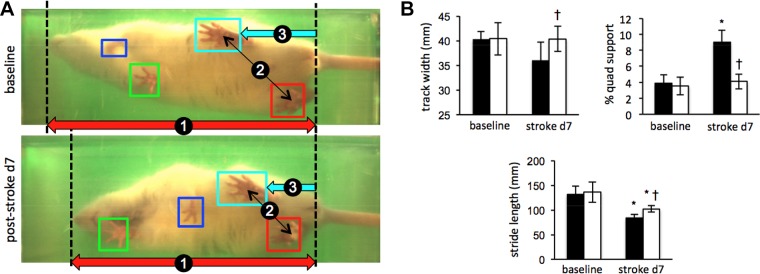Figure 3.
RAMT improves poststroke gait function. A) Representative still frames matched for stride position in control (RAMT−) rat at baseline and on poststroke d 7 demonstrate hunched posture (1), reduced rear track width (2), and shorter stride length (3). B) Compared to RAMT− controls (black bars), RAMT+ rats (white bars) had significantly increased track width, spent less time in quad support, and had a longer stride at poststroke d 7. Data are means ± sd (n = 7). *P < 0.05 vs. baseline within group; †P < 0.05 vs. RAMT− at the same timepoint.

